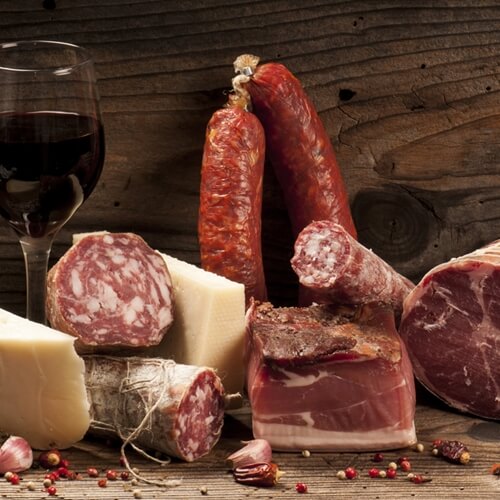How To Assemble The Perfect Charcuterie Board
Whether it’s an office party or Sunday’s big game, platters of food are an important component of many celebratory events. One such platter that seems to be especially popular is the charcuterie board. Consisting of many different kinds of meat, the art of charcuterie has recently become the primary motif of a host of restaurants all across the country. Luckily, you don’t have to go out on the town to enjoy the delicious taste of smoked meats. Here are a few pointers for the next time you decide to assemble your very own charcuterie board:
Pick your meat
According to Bon Appetit, there are a ton of tasty meats that you can choose for your board. Some of the more common options include:
- Sopressata: This cured sausage is noted for its spiciness and garlic aftertaste.
- Finocchiona: Another cured sausage, finocchiona has a much more sweet profile overall.
- Filetto baciato: This refers to a piece of filet mignon or tenderloin wrapped in salami.
- Jamon iberico: A cured ham that’s quite popular in Spain. Jamon is fairly comparable to bacon.
- Bresaola: A piece of beef tenderloin that has been air-dried and later salted.
Most of these meats will be available at a butcher or specialty shop. Depending upon the shop, though, some of these meat selections can cost $8 per pound or even higher. Because they’re gourmet or often involve special processing, you normally can’t find good quality meat for much cheaper.
Consider the accompaniments
Charcuterie boards are more than just the actual meat. Proper platters also come with a number of other components, all of which should work to enhance the flavor of the meat. The must-have accompaniments are:
- Lard: The fat in lard has loads of flavor, and serves as a nice counter when you’re eating this much meat. As a rule, you always want to use thinner slices, which work best for eating.
- Bread: It’s almost a given that meat and bread go together. Carbs and meat are like peanut butter and jelly, so you’ll want to opt for something like crackers, which also have a nice added crunch.
- Jam: Jam is the perfect dose of sweetness to the salty flavors of most meat options. Some chefs will opt for adding sweetness by including either pine nuts or pickled raisins in the jam.
- Terrine: Similar to a pate, terrines are made with either vegetables, meat or fish. They are most often included to add texture to the meat selections.
A final word on wine
Most charcuterie boards are consumed alongside either wine or beer. For the former, the most appropriate varieties include Pinot Grigio, Pinot Blanc, Beaujolais and Prosecco . If you opt for beer, meanwhile, pale ales and pilsners are often your best bets.


